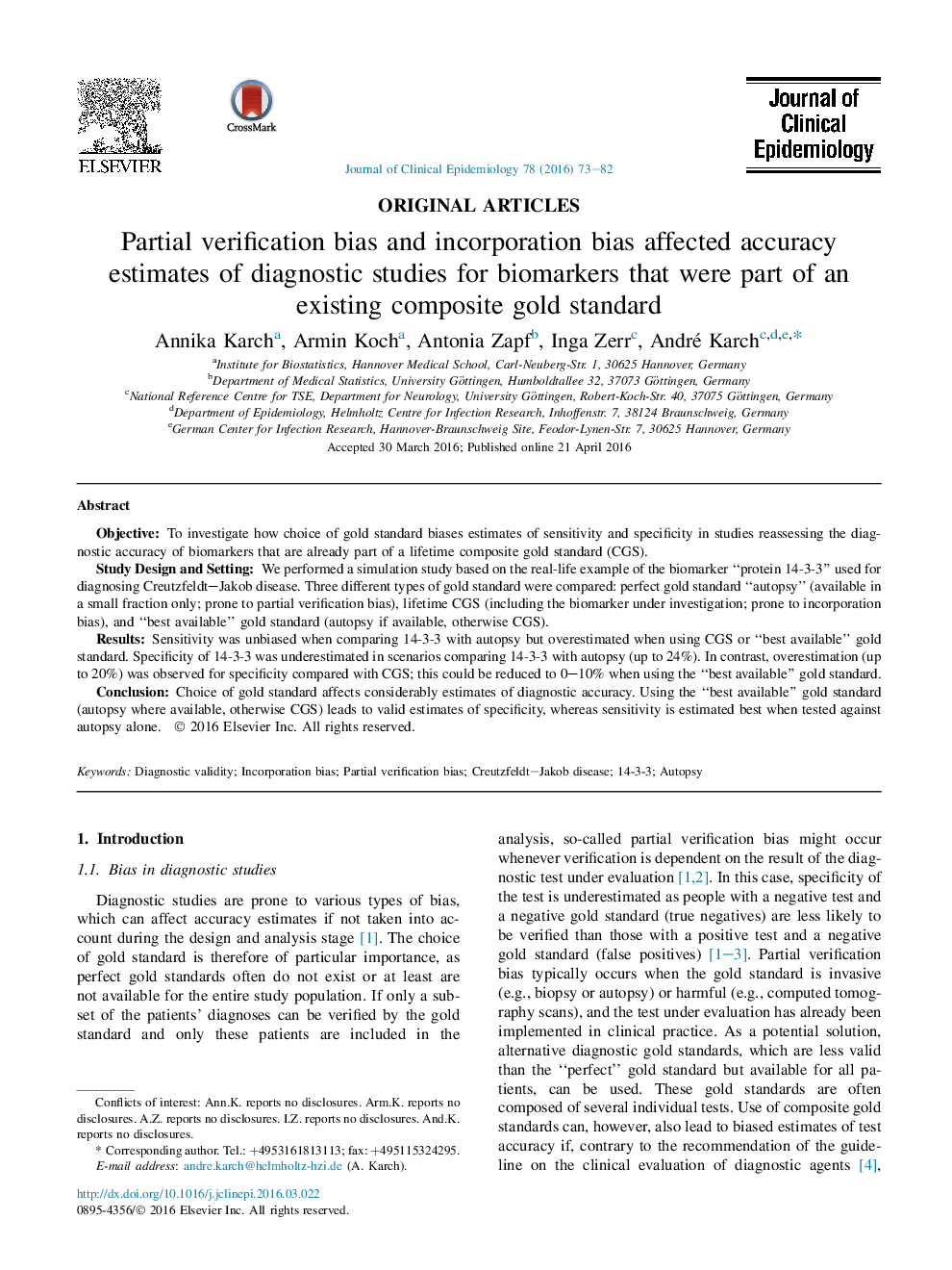| Article ID | Journal | Published Year | Pages | File Type |
|---|---|---|---|---|
| 5121878 | Journal of Clinical Epidemiology | 2016 | 10 Pages |
ObjectiveTo investigate how choice of gold standard biases estimates of sensitivity and specificity in studies reassessing the diagnostic accuracy of biomarkers that are already part of a lifetime composite gold standard (CGS).Study Design and SettingWe performed a simulation study based on the real-life example of the biomarker “protein 14-3-3” used for diagnosing Creutzfeldt-Jakob disease. Three different types of gold standard were compared: perfect gold standard “autopsy” (available in a small fraction only; prone to partial verification bias), lifetime CGS (including the biomarker under investigation; prone to incorporation bias), and “best available” gold standard (autopsy if available, otherwise CGS).ResultsSensitivity was unbiased when comparing 14-3-3 with autopsy but overestimated when using CGS or “best available” gold standard. Specificity of 14-3-3 was underestimated in scenarios comparing 14-3-3 with autopsy (up to 24%). In contrast, overestimation (up to 20%) was observed for specificity compared with CGS; this could be reduced to 0-10% when using the “best available” gold standard.ConclusionChoice of gold standard affects considerably estimates of diagnostic accuracy. Using the “best available” gold standard (autopsy where available, otherwise CGS) leads to valid estimates of specificity, whereas sensitivity is estimated best when tested against autopsy alone.
